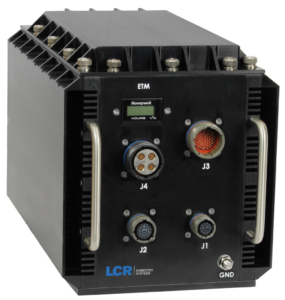The ever increasing data rates and processing speeds brought about by new high speed sensor and compute equipment used in defense scenarios is pushing the thermal limits in 3U VPX and SOSA aligned systems. Traditional methods are challenged in ensuring failsafe operation in critical C5ISR applications to address these concerns.
For nearly three decades, the environmental extremes in which systems need to perform, like temperature, shock and vibration have not changed much; however, the internal heat generated by systems has multiplied since the introduction of VPX. High speed FPGA and CPU 3U modules necessary for advanced RF / EW / SIGNINT applications may top out at nearly 200W TDP (total dissipated power) at full rate due to the higher data rates. This poses significant challenges with thermal management.
Design Considerations
 Chassis design plays a key role in addressing the thermal issues that arise from these higher payload powers that are now common in the industry. The following areas need to be addressed to help mitigate these issues:
Chassis design plays a key role in addressing the thermal issues that arise from these higher payload powers that are now common in the industry. The following areas need to be addressed to help mitigate these issues:
- Conduction cooling constraints – Nearly all VPX systems rely on conduction cooling using VITA 48.2 standard conduction cooled modules. VITA 48.2 modules include custom heat sinks that are conformant to the topography of the module components. Chassis designed for 48.2 modules rely on the standard conductive path that draws heat from those hot components out to the chassis and its cold plate. Given the increasing module power, this passive conduction design is rarely sufficient to the heat reduction requirements, topping out at approximately 60W per module.
- Conduction cooling with air assist – Staying with 48.2 modules, most new chassis designs now incorporate channeled side walls and a bank of cooling fans for drawing air past the module edges and out the rear of the chassis. Effective cooling of these air plus conduction cooled chassis tops out at approximately 110W per module.
Such chassis level cooling approaches have their limits. The industry is starting to embrace unique solutions that include new module level cooling approaches, while encouraging more collaboration between module and chassis designers.
Module Design
Whether through module design or chassis design, boosting heat dissipation in emerging VPX systems will generally divide into two areas of concentration where solutions point to chassis-level cooling or board-level (VPX module) cooling using one of the three module standards described.
Chassis Design
Optimal chassis design is all about tradeoffs and competing factors regardless of module standards. A holistic design approach, weaving in factors like cost, target environment, ambient temperature, altitude, aggregate wattage, space and weight constraints, wattage per slot, and waste heat all play into successful thermal management.
Key design considerations, include cable routing, system throttling, conductive path optimization, sizing, materials, fan selection, slot power uniformity, cooling fin designs, air flow optimization and liquid flow, as well as temperature optimization. These considerations hold true for all chassis regardless of the VITA standard modules the system supports. Most current chassis support 48.2 modules and therefore use either passive conduction or air plus conduction as described earlier. By leveraging new 48.8 and 48.4 modules, new chassis designs can be created to support modules built to these standards.
Mixed Module Support – 48.2, 48.4, 48.8
Most VPX and SOSA aligned 3U VPX modules in integrated systems will drive more moderate power demands, including switching and network timing. A vast majority of processing modules will fall into the sub 100W field.
The population of modules in many signal processing systems will increasingly include one or more modules that push the power limits. High speed FPGA, GPGPU and high-end processing functions on modules in high speed systems are surpassing 150W. Recognizing the thermal limitations of VITA 48.2 modules, designers are taking the initiative to introduce VITA 48.8 and 48.4 versions of these high speed modules. In practice, this means that in a given population of system modules, there may be one or two modules that are power hungry and are available as 48.8 or 48.4 standard versions.
In the race to resolve the heat dissipation issues, air cooling is the preferred choice at both the module and chassis level. Liquid cooling in any form requires chillers and pumps – mechanical infrastructure with high cost, space and maintenance overhead that the industry seeks to avoid except in extreme cases when module power surpasses 200W.
New Chassis Design Options
As the trend towards higher power in 3U VPX modules continues, emerging chassis designs must include options that address the need for mixed VITA 48.2. 48.8 (primarily) and 48.4 standard module payloads. From a cost / performance standpoint, this approach offers the advantage of solving the thermal issues in an effective manner as it enables fast uptake of new modules for high speed applications.

Leave a Reply
You must be logged in to post a comment.